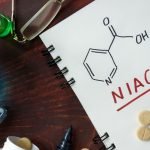Caffeine’s Contradictory Role in Headaches
Tolle Causam
Marnie Loomis, ND
Kayla Preece
Ears inevitably perk up when caffeine is mentioned. For many, caffeine plays such an important daily role that people feel a sense of dependence upon it. The World Health Organization estimates that 47% of the public has at least one headache a year.1 As the preferred stimulant of the global population, caffeine sits in a curious, somewhat dichotomous spot in the arena of headaches. On one hand, caffeine has long been recognized as an effective adjuvant for pain relief. On the other hand, caffeine has been implicated in inducing headaches in people of all ages.
Caffeine’s seemingly contradictory effects on headaches is based on its varied metabolic pathways and the causative mechanisms behind the headaches themselves. Caffeine’s stimulant action results from it crossing the blood-brain barrier and acting as a competitive inhibitor to adenosine receptors. Adenosine normally suppresses neural activity and increases blood flow to vascular smooth muscle during times of stress. Caffeine blocks this action, allowing neural activity to continue.
The mechanisms of caffeine’s inhibitory effects are well understood. As a methylated xanthine, caffeine acts as a competitive nonselective phosphodiesterase inhibitor, raising intracellular cyclic adenosine monophosphate (cAMP), activating protein kinase A (PKA), inhibiting tumor necrosis factor (TNF)-alpha and leukotriene synthesis, and reducing inflammation and innate immunity. However, caffeine also has disinhibitory effects on the brain that are not yet completely understood.2
Caffeine is a common adjuvant ingredient in some of the common OTC analgesics. Examples include Extra Strength Midol®, Anacin®, Excedrin®, and Bayer Select Maximum Strength®. A multicenter study comparing ibuprofen to a combination of acetaminophen, aspirin, and caffeine found the combination to be more effective than ibuprofen alone.3 It was also noted in this study that at least 65 mg of caffeine were needed to achieve its potentizing effects in combination with analgesics. In contrast, a Cochrane review of 19 comparable studies determined that caffeine at a dose higher than 100 mg produced a slight increase in pain relief that was important to the study participants.4
Caffeine, in amounts varying between 30 mg and 100 mg, has been added to less commonly used prescription medications, such as Cafergot® for migraines, orphenadrine (in combination with aspirin) as a muscle relaxer, and butalbital (in combination with acetaminophen and codeine) as an analgesic.
There is some evidence to suggest that the frequency with which one consumes caffeine may have an effect on headache prevalence. In one study, those who consumed caffeine on a daily basis were more likely to have chronic migraines and analgesic rebound pain than those who did not.5 Another study found that out of 100 children experiencing chronic headaches, approximately one-third of them drank large volumes of soft drinks and were receiving approximately 200 mg of caffeine per day. When the children stopped drinking the soft drinks, the headaches disappeared.6
There is some regulation with regards to caffeine in manufactured drinks. The US Food and Drug Administration limits the maximum caffeine content in a 12-oz soft drink to 71 mg.7 A report in the Journal of Analytical Toxicology examined the caffeine content of 36 drinks that were classified as energy drinks, soft drinks, or “other.” All of the soft drinks were within the allowable caffeine range, whereas, not surprisingly, the energy drinks contained approximately twice the amount of caffeine as the soft drinks.8
Another aspect of caffeine’s variable effects on individuals involves genetic differences that affect cytochrome P450 enzymes. Caffeine has, on average, a 5-hour half-life and is broken down by the CYP1A2 pathway in the liver and large intestine.9 A single nucleotide polymorphism (SNP) on the CYP1A2 gene (rs762551) can greatly affect a person’s tolerance to caffeine, depending on whether they carry the slow metabolizer *1F allele, or the fast metabolizer *1A/1A genotype.10 The frequency of this SNP is not well known but it is good to keep this variable in mind when piecing together our patients’ histories and effects of caffeine.
As a clinician, it is also helpful to remember that headaches are not always reported by patients during office visits unless they are the chief complaint. When headaches do occur, patients often self-medicate. Caffeine intake should be watched particularly carefully during pregnancy, where there is an increased risk of spontaneous abortion and incidence of small-for-gestational-age infants born to women consuming more than 150 mg of caffeine a day.8 For any patient, an encouraged awareness of caffeine intake, as well as an educated view of the possible effects of caffeine, will help them navigate a discovery process of the relationship between their headaches and caffeine.
The soft drink industry has found that the average person in the United States consumes 4 mg/kg of caffeine daily. For an average sized 60-kg person, this is 240 mg coming from a variety of sources.10
- The average cup of coffee contains between 60 mg and 150 mg of caffeine.
- Hershey’s Special Dark® chocolate bar contains 20 mg of caffeine.
- Two Excedrin Migraine® tablets (the recommended dose) contain 130 mg of caffeine.
- A Starbucks Light Frappuccino® with espresso also contains 130 mg of caffeine.
- Some foods also contain added caffeine, such as Morning Spark® instant oatmeal and Perky Jerky®, which have hopefully been named appropriately enough to alert those who are sensitive to caffeine to look more closely at the labels.
 Marnie Loomis, ND is the director of professional formation and career services and an adjunct faculty member at the National College of Natural Medicine, Portland, Oregon. She enjoys writing and is a popular public speaker who appears on local TV news programs and in front of professional and public audiences throughout the country. Before joining NCNM, Dr Loomis had a private naturopathic medical practice in Aloha, Oregon, and was the managing editor ofNaturopathic Doctor News & Review.
Marnie Loomis, ND is the director of professional formation and career services and an adjunct faculty member at the National College of Natural Medicine, Portland, Oregon. She enjoys writing and is a popular public speaker who appears on local TV news programs and in front of professional and public audiences throughout the country. Before joining NCNM, Dr Loomis had a private naturopathic medical practice in Aloha, Oregon, and was the managing editor ofNaturopathic Doctor News & Review.
 Kayla Preece, ND, is a recent graduate of the National College of Natural Medicine, and will soon be licensed as a naturopathic physician and midwife. She is excited to begin her private practice in a rural community as a truly family doctor. She enjoys spending time with her husband, dog, chickens and honeybees.
Kayla Preece, ND, is a recent graduate of the National College of Natural Medicine, and will soon be licensed as a naturopathic physician and midwife. She is excited to begin her private practice in a rural community as a truly family doctor. She enjoys spending time with her husband, dog, chickens and honeybees.
References
- World Health Organization. Headache Disorders. October 2012. http://www.who.int/mediacentre/factsheets/fs277/en. Accessed February 23, 2012.
- Caballero B, Finglas P, Trugo L, eds. Encyclopedia of Food Sciences and Nutrition. Salt Lake City, UT: Academic Press; 2003.
- Goldstein J, Silberstein SD, Saper JR, et al. Acetaminophen, aspirin, and caffeine in combination versus ibuprofen for acute migraine: results from a multicenter, double-blind, randomized, parallel-group, single-dose, placebo-controlled study. Headache. 2006; 46:444.
- Derry CJ, Derry S, Moore RA. Caffeine as an analgesic adjuvant for acute pain in adults. Cochrane Database Systemic Reviews. 2012, Issue 3, Art. No: CD009281. doi: 10.1002/14651858.CD009281.pub2. http://www.cpdcentre.co.za/ArticleDocuments/NurofenArticle.pdf. Accessed February 23, 2012.
- Bigal ME, Sheftell FD, Rapoport AM, et al. Chronic daily headache: identification of factors associated with induction and transformation. Headache. 2002;42(7):575-581.
- Hering-Hanit R, Gadoth N. Caffeine-induced headache in children and adolescents. Cephalagia. 2003;23(5):332-335.
- U.S. Food and Drug Administration. Notice of GRAS Exemption Claim for Use of Caffeine in Alcoholic Beverages. Orlando, FL: Federal Registry; June 25, 2010. http://www.accessdata.fda.gov/scripts/fcn/gras_notices/GRN000347.pdf. Accessed April 28, 2013.
- McCusker RR Goldberger BA, Cone EJ. Caffeine content of energy drinks, carbonated sodas and other beverages. J Anal Toxicol. 2006;30(2):112-114.
- Cazeneuve C, Pons G, Rey E, et al. Biotransformation of caffeine in human liver microsomes from foetuses, neonates, infants and adults. Br J Clin Pharmacol. 1994;37(5):405-412.
- El-Sohemy A, Cornelis MC, Kabagambe EK, Campos H. Coffee, CYP1A2 genotype and risk of myocardial infarction. Genes Nutr. 2007;2(1):155–156.
- Barone JJ, Roberts HR. Caffeine consumption. Food Chem Toxicol. 1996; 34(1):119–129.










